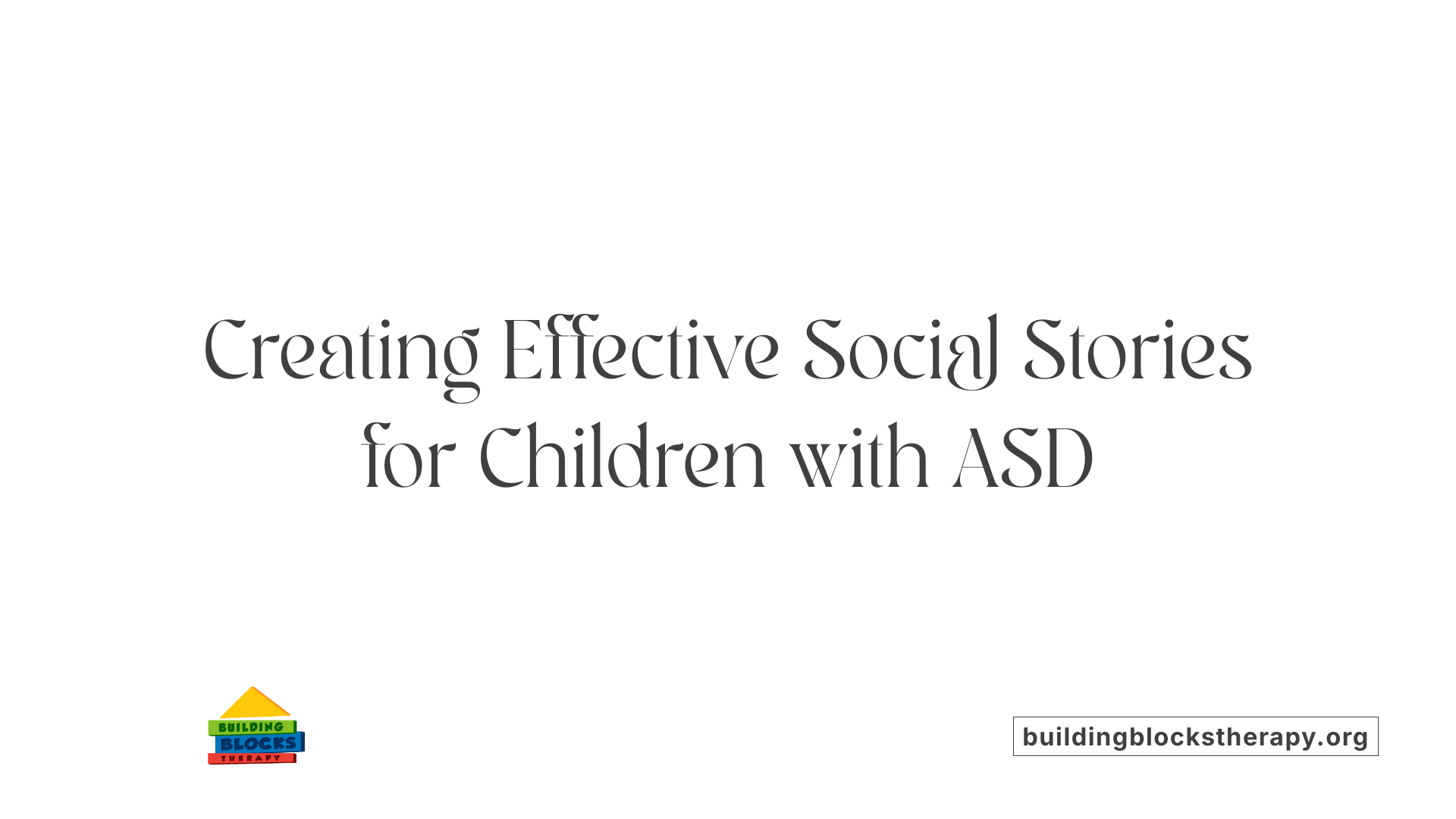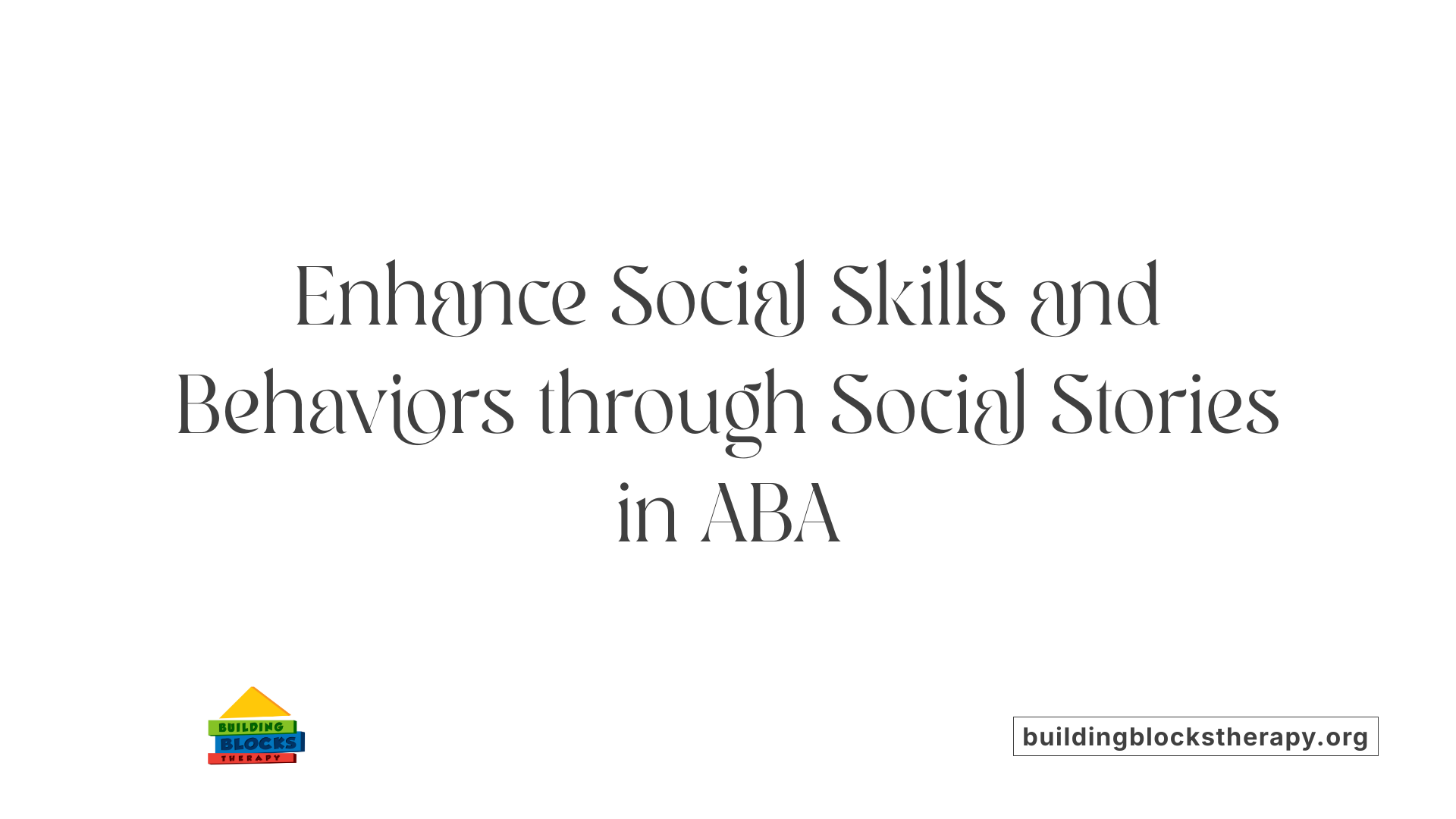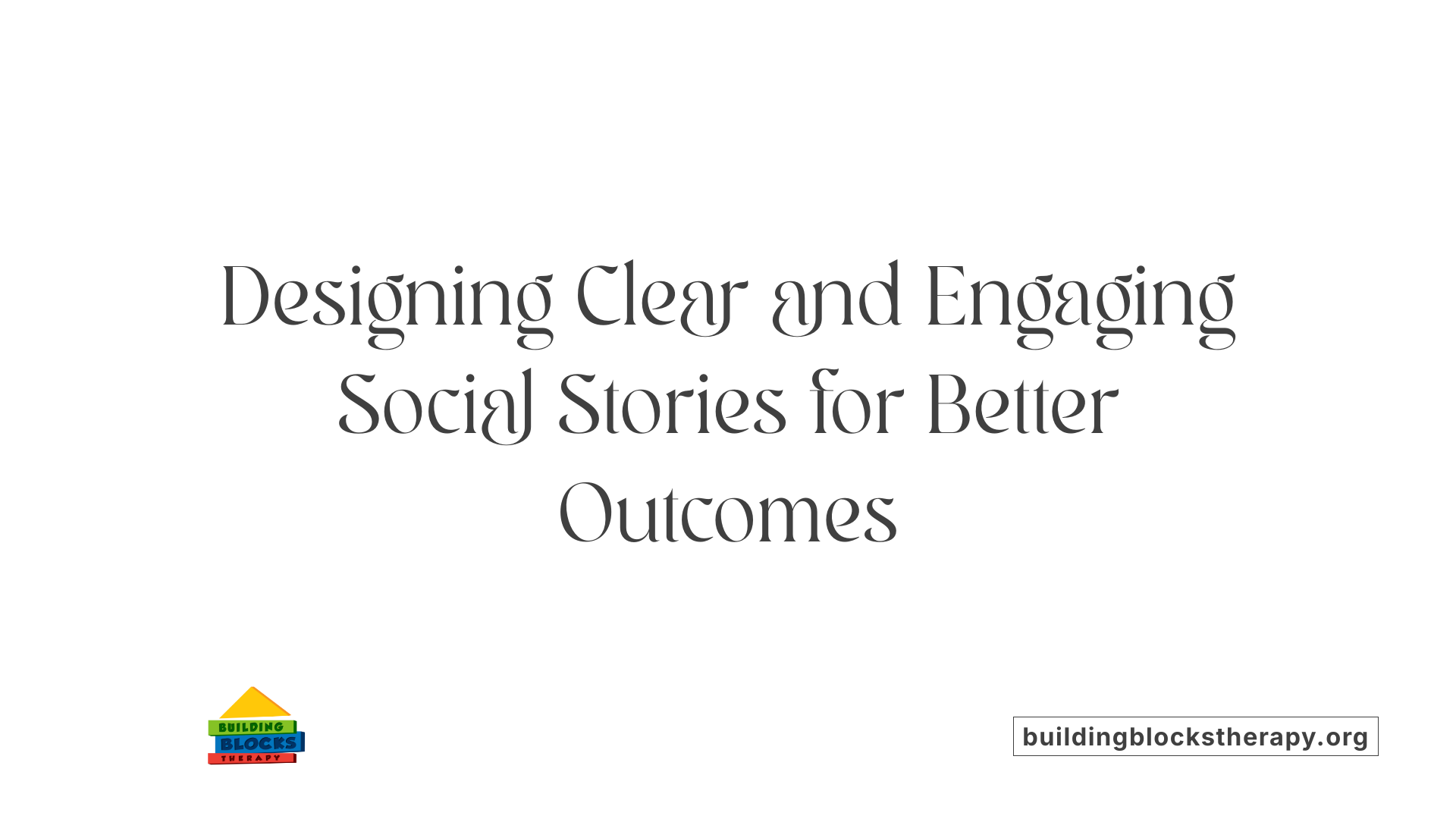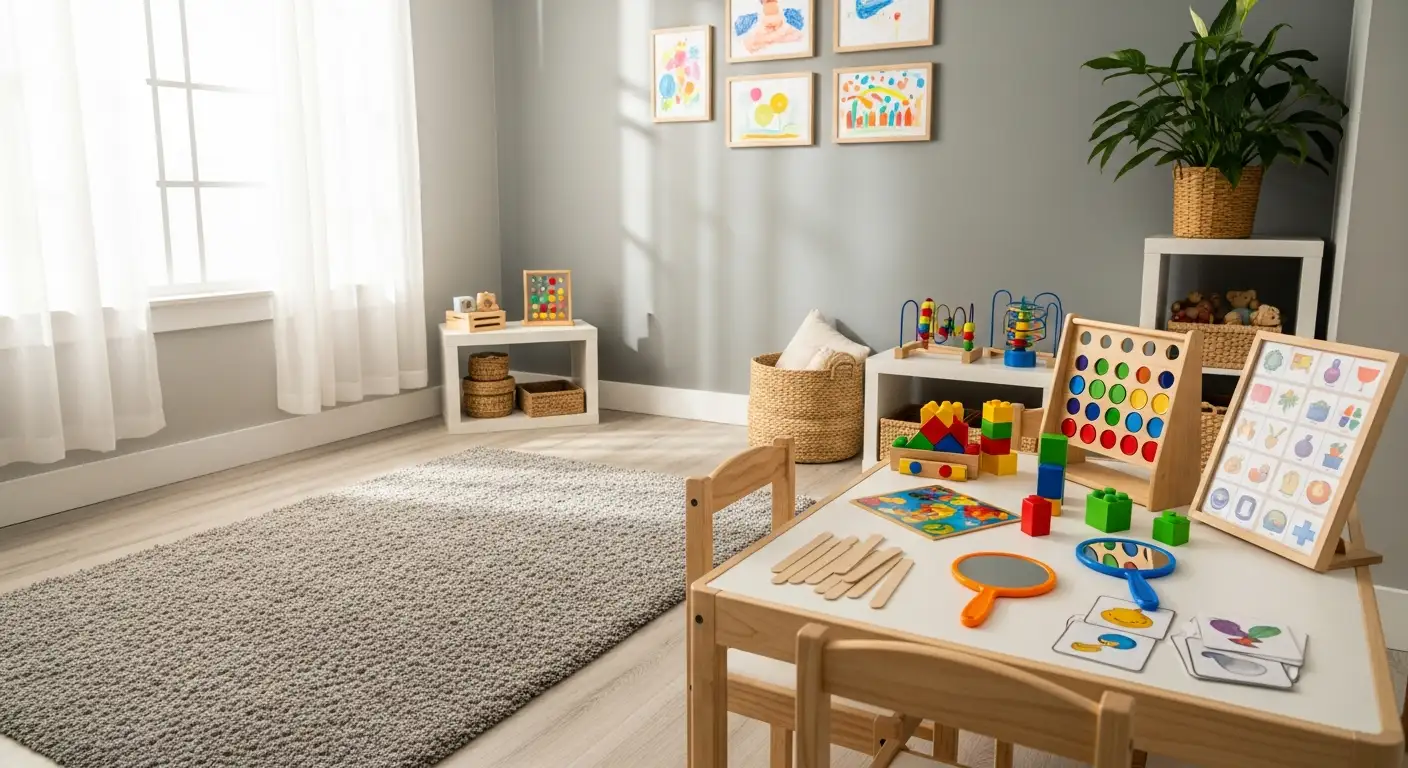Understanding the Role of Social Stories in Autism Therapy
Social stories are essential tools within ABA therapy designed to enhance social understanding and modulate behaviors in children with autism spectrum disorder (ASD). Since their inception by Carol Gray in the early 1990s, these personalized narratives have evolved into versatile interventions used by therapists, educators, and caregivers globally. Their primary goal is to clarify social norms, prepare children for upcoming social situations, and reduce anxiety by providing concrete, visual, and verbal guidance tailored to individual needs.
Development and Construction of Social Stories

What are social stories and how are they developed for use in ABA therapy?
Social stories, also called social narratives, are personalized, short stories designed to help children, especially those with autism spectrum disorder (ASD), better understand social situations and expectations. They serve as practical tools to teach social skills, reduce anxiety, and guide appropriate behavior.
Creating an effective social story begins with identifying the specific social challenges or situations a child faces. The story then incorporates simple, clear language, usually in the first person, to make it relatable and engaging. It includes factual descriptions of the situation, feelings involved, and proper social responses.
Guided by principles established by Carol Gray, the stories are structured with four main types of sentences: descriptive, perspective, directive, and affirmative. Descriptive sentences provide factual information about the event or activity. Perspective sentences help the child understand others’ feelings and viewpoints. Directive sentences outline what behavior is expected, while affirmative sentences reassure the child about how the situation will turn out.
Visual elements such as photographs, pictures, or illustrations are often added to enhance understanding and appeal. Creative approaches like flipbooks, comic strips, or digital apps can make the stories more captivating, especially when tailored with elements like favorite characters.
The development process involves selecting relevant topics—such as going to the dentist, sharing, or managing loud noises—and writing simple sentences that reflect the child's vocabulary and comprehension level. Regular review and practice of the story help reinforce learning.
In ABA therapy, social stories function as structured interventions. They are integrated into routines to help children generalize skills across different settings, build confidence in social interactions, and learn to manage emotions. When developed thoughtfully and used consistently, social stories can be powerful tools to foster social understanding and positive behaviors in children with ASD.
Categories and Sources of Social Stories

What categories of social stories are used in therapy, and what are their typical sources?
Social stories are versatile tools used to address a wide range of social, emotional, and behavioral topics. They are particularly helpful for children with Autism Spectrum Disorder (ASD) by promoting understanding and positive interactions.
Common categories include social skills, such as sharing and taking turns, managing emotions like anger or anxiety, routines like going to school or visiting the dentist, safety topics such as crossing the street or handling loud noises, manners, and boundary setting. These stories can also be about transitions—like changing classrooms or starting school—as well as specific behaviors such as hitting or spitting.
Sources of social stories vary. Many are available through specialized websites like the Watson Institute or headstartinclusion.org, which offer a broad array of free stories categorized by topic. These online repositories often include stories with illustrations, photographs, or downloadable templates for customization.
Beyond online sources, therapists, educators, and caregivers often create personalized social stories tailored to the child's unique needs. They may use different formats like written narratives with pictures, comics, videos, or multimedia apps to keep the child engaged. This personalization ensures the story resonates with the child's interests and comprehension level.
Overall, social stories are adaptable tools presented in various formats and sourced from both free online resources and personalized creations. They are essential for helping children navigate social environments confidently and with reduced anxiety.
| Category | Typical Topics | Source Examples |
|---|---|---|
| Social Skills and Manners | Sharing, turn-taking, saying 'please' and 'thank you' | Online websites, therapist-created materials |
| Emotional Regulation | Feeling happy, sad, angry, managing fears | Educational organizations, custom stories |
| Routine and Transitions | Going to school, visiting the doctor, riding public transport | Caregiver-crafted stories, multimedia apps |
| Safety | Crossing streets, handling loud noises, personal boundaries | Specialized therapy resources, parent guides |
| Behavioral Challenges | Hitting, spitting, tantrums | Therapy sessions, autism organizations |
These diverse categories and sources demonstrate the flexibility of social stories as an effective part of ABA therapy and educational strategies for children with ASD.
Supporting and Developing Social Skills with Social Stories

How are social stories used in ABA therapy to support behavioral and social skills development?
Social stories play a crucial role in ABA (Applied Behavior Analysis) therapy aimed at helping children with autism understand and improve their social behaviors. These stories are personalized narratives that often include visual aids like pictures or photographs, tailored to the child's vocabulary and comprehension levels.
Within ABA therapy, social stories serve to clarify social norms and expectations. They demonstrate appropriate responses to various situations, such as sharing, taking turns, or coping with loud noises. By illustrating these behaviors in familiar, relatable contexts, social stories help children recognize and imitate prosocial behaviors.
The primary goal is to foster greater self-awareness and emotional regulation. For example, a social story about visiting the dentist might explain what to expect, how to stay calm, and what behavior is appropriate, reducing anxiety and encouraging cooperation.
Social stories also promote social engagement and communication skills. When children understand what is expected and feel more confident, they are more likely to participate actively in social interactions. This understanding reduces problematic behaviors like hitting or yelling, as children learn more effective ways to express themselves.
An essential feature of social stories is their adaptability. They can be customized to fit each child's unique needs, interests, and developmental level. This customization makes them highly effective tools for fostering positive behavioral changes and enhancing social understanding.
In summary, social stories are a well-supported strategy within ABA therapy. They help children navigate social environments more successfully, boosting both their social skills and overall behavior, and paving the way for greater independence and confidence in social settings.
Designing Effective Social Stories for ABA

What is the structure of effective social stories for ABA therapy, and how should they be crafted?
Effective social stories in ABA therapy are concise, positive narratives designed to help individuals understand and navigate social situations or behaviors. They are typically short, straightforward, and written in simple, age-appropriate language to ensure clarity.
The stories generally include several types of sentences:
- Descriptive sentences: Outline what the situation looks like, who is involved, and what is happening.
- Perspective sentences: Explain how others might feel in the situation, fostering empathy and social awareness.
- Directive sentences: Clearly state what the individual should do or how they should behave.
- Affirmative sentences: Reassure and summarize how the situation will unfold positively.
Visual supports play a crucial role. Using pictures, photographs, or drawings helps children grasp the concepts better and keeps them engaged. Personalization is essential. Tailoring the story to meet the child's specific fears, needs, and experiences makes the story more relevant and effective.
Incorporating visual schedules and routines within social stories also offers predictability, helping to reduce anxiety. When stories reflect familiar routines and include anticipated behaviors, children gain confidence and develop independence.
Crafting engaging and effective stories involves collaboration with therapists and caregivers. They can provide insights into which scenarios and language resonate most with the child. Ultimately, well-structured social stories empower children to understand social norms, manage expectations, and develop essential skills effectively.
Research and Evidence for Social Stories in ABA
What does research say about the effectiveness of social stories in ABA therapy?
Research generally supports the positive impact of Social Stories in helping children with autism spectrum disorder (ASD) understand social norms and improve behaviors. Numerous studies have reported improvements in social communication, increased prosocial actions, and a decrease in problematic behaviors when these stories are used.
When social stories are tailored to the individual, using clear language and visual supports, they can effectively promote understanding across different settings like classrooms and homes. Many practitioners also incorporate multimedia elements, such as videos or pictures of familiar characters, to make the stories more engaging.
Systematic reviews and case studies highlight that Social Stories, as part of a broader intervention plan, can support positive development. However, the evidence is mixed in strength and quality. Some studies suggest significant benefits, while others call for more rigorous testing to confirm these outcomes.
While considered promising, Social Stories should not be relied upon alone. They work best when integrated with other strategies, such as behavioral interventions and social skills training, and when personalized to each child's needs.
Overall, ongoing research is crucial. Higher-quality studies will help clarify exactly how, when, and for who Social Stories are most effective, ensuring they are used in the most beneficial ways in ABA therapy.
Best Practices for Implementing Social Stories in ABA
What are the best practices for implementing social stories in ABA therapy?
Implementing social stories effectively requires a thoughtful approach that emphasizes personalization. Each story should be tailored to address the child's unique needs, routines, and social challenges. This means including relevant scenarios, vocabulary, and visuals that resonate with the child's experiences.
Creating engaging and relevant stories is crucial. Visual supports like pictures, photographs, or comic strips can make stories more accessible and appealing. Incorporating favorite characters or themes helps capture the child's interest, increasing the likelihood of successful learning.
Integration with other strategies enhances effectiveness. Social stories are often used alongside role-playing, natural environment practice, and visual aids to reinforce social concepts. These combined methods help children generalize learned skills across settings.
Consistent use of social stories, especially before transitions or unfamiliar activities, can reduce anxiety and prepare children mentally. Repeated reading, in a calm and positive tone, supports understanding and retention.
Discussion is essential. After reading, therapists or parents should talk about the story's content, ask questions, and encourage children to express what they've learned. This dialogue fosters comprehension and helps children apply social rules in everyday life.
Involving peers and making the process interactive can boost social learning. Using games, group activities, or role-play scenarios rooted in the story content encourages children to practice skills in real-world contexts.
To promote skill generalization, therapists should gradually introduce variations of the social story, incorporate different settings, and encourage children to recall strategies independently. Regular review sessions ensure the concepts stay fresh and relevant.
Overall, success lies in a respectful, gentle approach that respects each child's pace and fosters confidence. Regularly updating stories to reflect progress and emerging needs keeps the intervention dynamic and effective.
Supporting Skill Generalization
A crucial goal of social stories in ABA is to help children apply learned behaviors across various contexts. Techniques such as incorporating multiple settings, cues, and social partners in story-based activities promote this.
Gradual scaffolding allows children to try out new skills with support before applying them independently. Reinforcing these skills with positive feedback and encouragement increases motivation and confidence.
Engagement Techniques
Keeping stories engaging is vital. Using colorful visuals, incorporating preferred characters, and transforming stories into flipbooks or digital apps can make learning fun. Interactive activities like quizzes, puzzles, or sing-alongs related to the stories also maintain interest.
Overall, best practice combines personalization, consistent use, engaging delivery, and ongoing support to maximize the benefits of social stories within ABA therapy.
Harnessing the Power of Social Stories
Incorporating social stories into ABA therapy offers a personalized, visual, and narrative approach to teaching social skills, making complex social norms more accessible and less intimidating for children with autism. When carefully crafted and implemented with best practices, social stories facilitate better understanding, reduce anxiety, and promote positive behavioral outcomes. Ongoing research affirms their usefulness, though continued investigation is essential to fine-tune approaches and expand their effectiveness across diverse populations. Overall, social stories remain a vital component of modern ABA strategies, helping children navigate social worlds with confidence and independence.
References
- Social Stories - ABA Educational Resources
- Social Narratives in Context of Applied Behavior Analysis?
- How Social Stories Can Help in ABA Therapy | Childwise
- Social Stories in ABA Therapy: How to Craft and Its Benefits
- Building Social Awareness in Children with Autism - Aim Higher ABA
- Using Social Stories to Prepare for Changes - Watson Institute
- Social Stories - ABA Educational Resources
- Social Stories - Best Practice Resource - Middletown Centre for Autism






